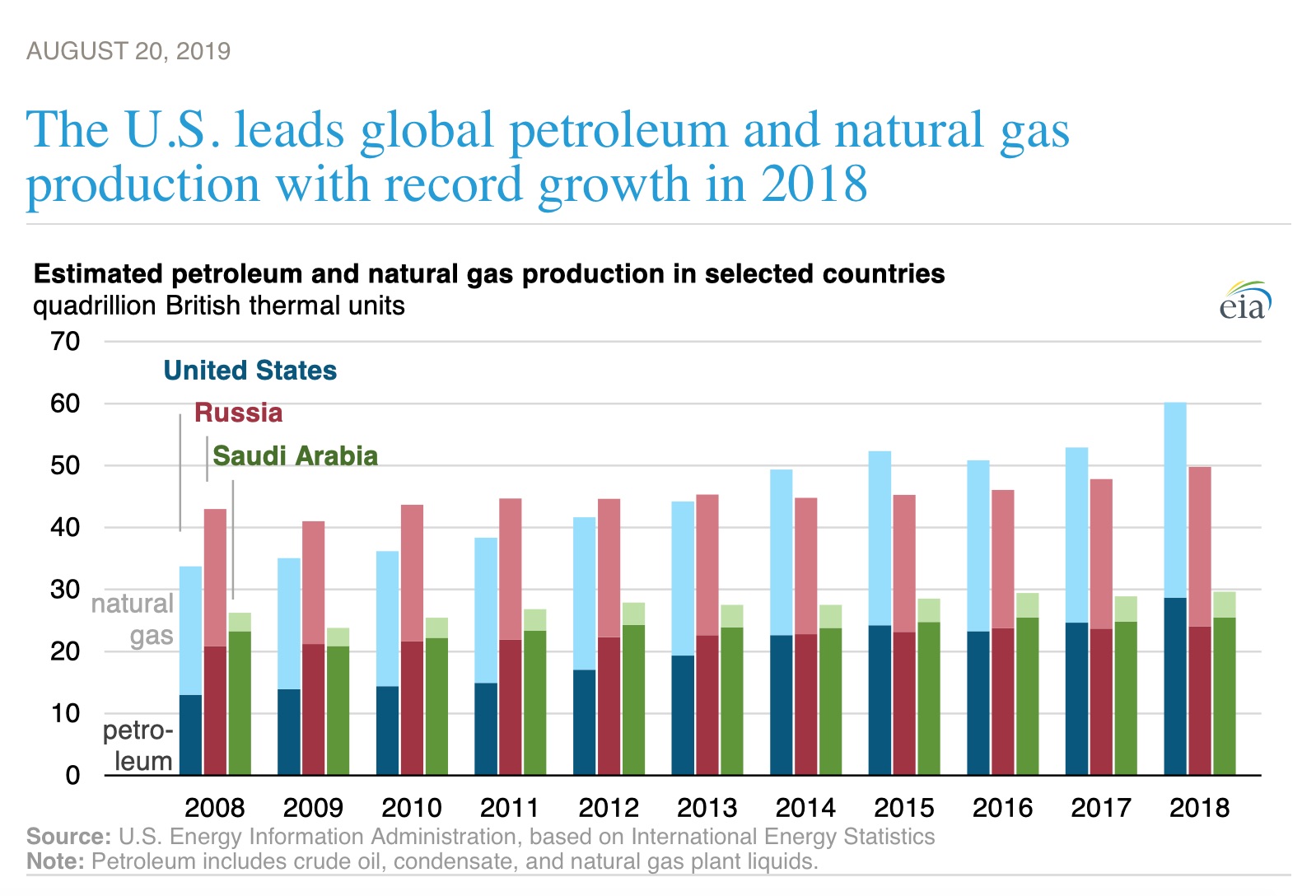America’s fossil fuel production has been on the rise over the past decade. Simultaneously, the nation’s energy-related CO2 emissions have been on a significant decline. Many might ask “How can ramping up our fossil fuel extraction AND decreasing CO2 emissions happen at the same time?” To that question, JLF’s Jon Sanders would happily answer, “Fracking.”
Sanders wrote a research brief this week on how the fracking revolution has benefitted the United States’ carbon footprint. Sanders writes:
The United States has become the world’s top producer of petroleum and natural gas. We’re even beating Russia and Saudi Arabia. As you can see, that wasn’t the case just a decade ago.

Sanders quotes a recent global CO2 emissions report:
The United States saw the largest decline in energy-related CO2 emissions in 2019 on a country basis – a fall of 140 Mt [million tons], or 2.9%, to 4.8 Gt [gigatons].
US emissions are now down almost 1 Gt from their peak in the year 2000, the largest absolute decline by any country over that period.
Sanders explains much of this reduction is likely the result of fracking:
thanks to fracking, plentiful oil has freed the U.S. from massive gasoline price spikes whenever there are troubles in the Middle East. Did you notice what happened at the pumps last month while all the media talking heads were fretting about “World War III” and “war with Iran”? They actually went down.
research finds that nuclear and natural gas are the most inexpensive, efficient ways to reduce emissions, while solar and wind are the most expensive and least efficient. The IEA report acknowledged price-competitive natural gas gaining more share of electricity generation in the U.S. as coal declined.
Read the full brief here. Learn more about the nation’s falling emissions here.


